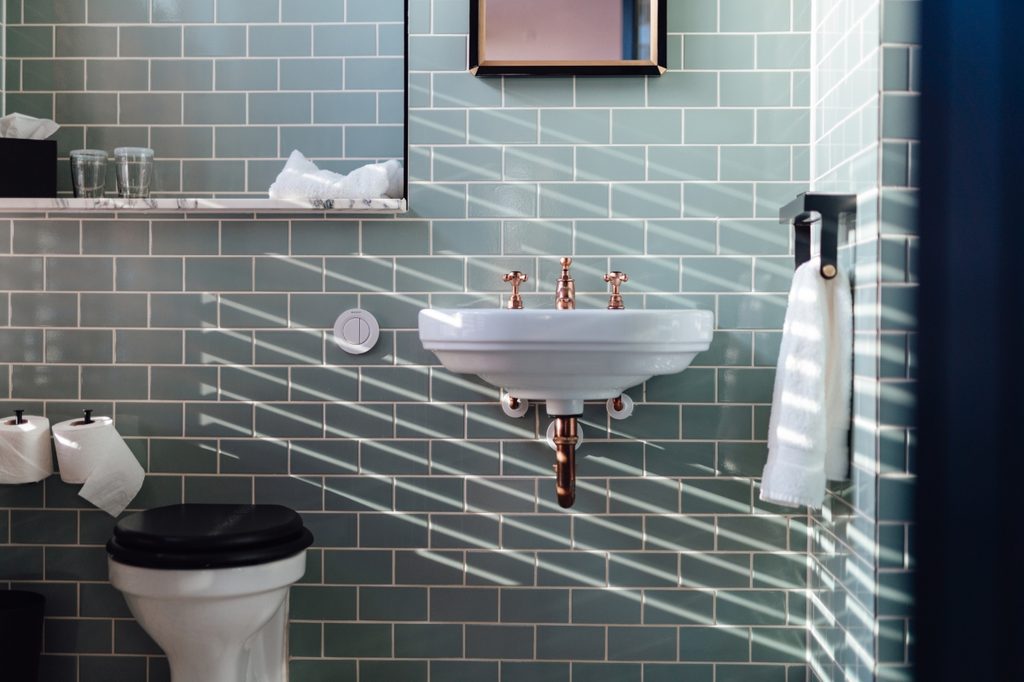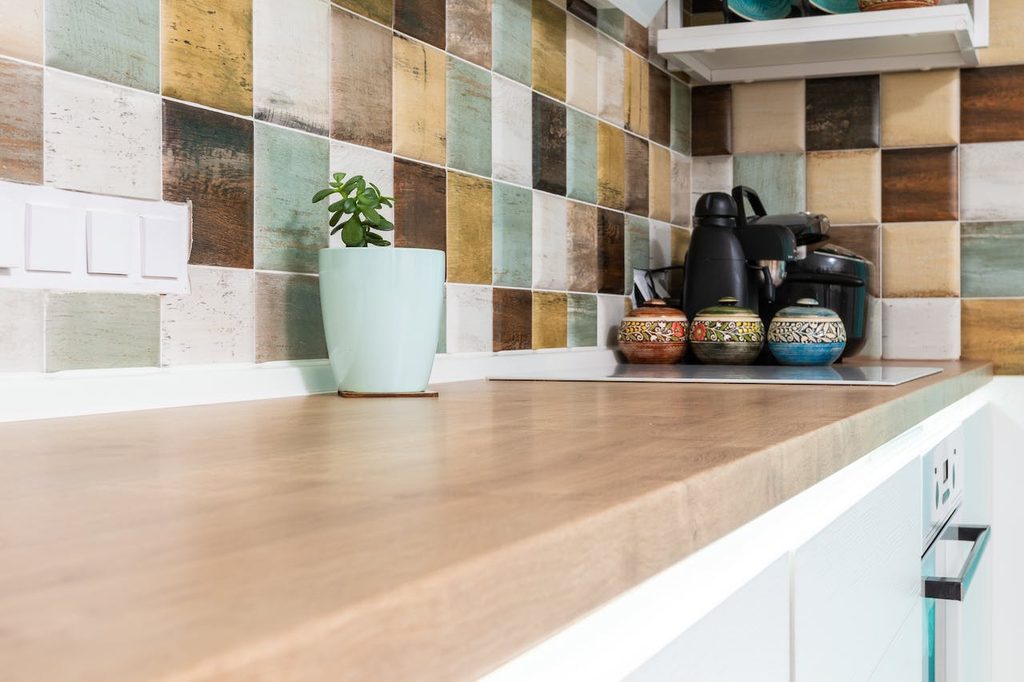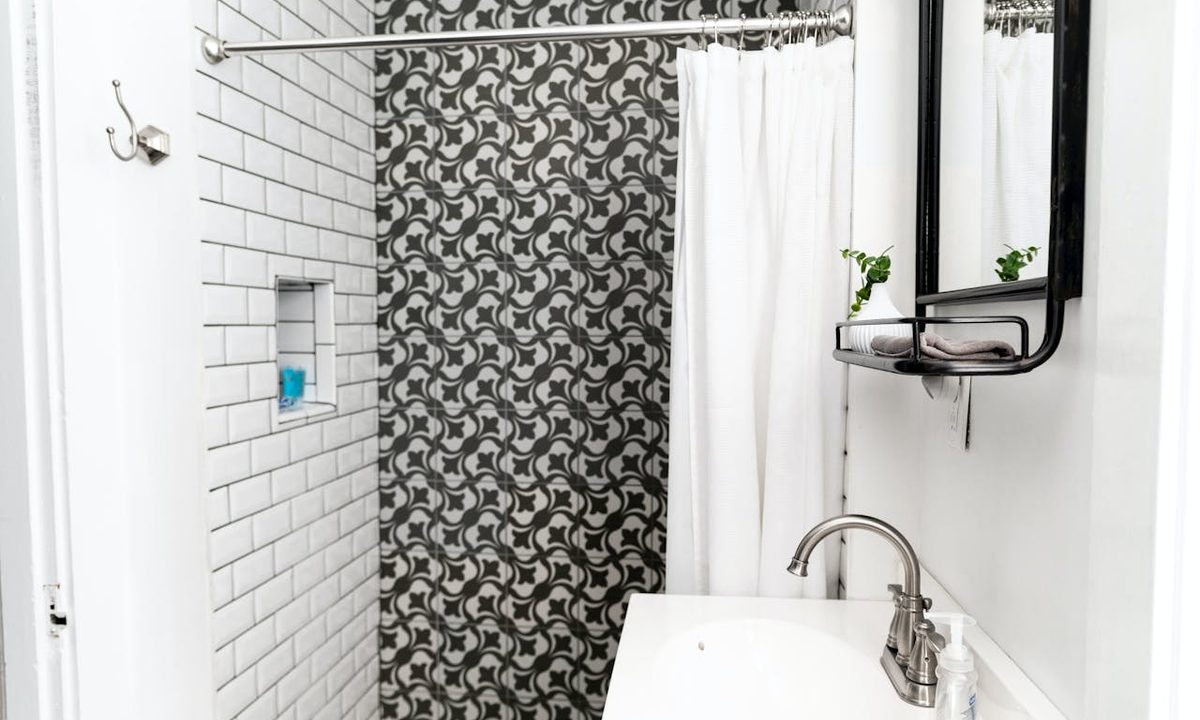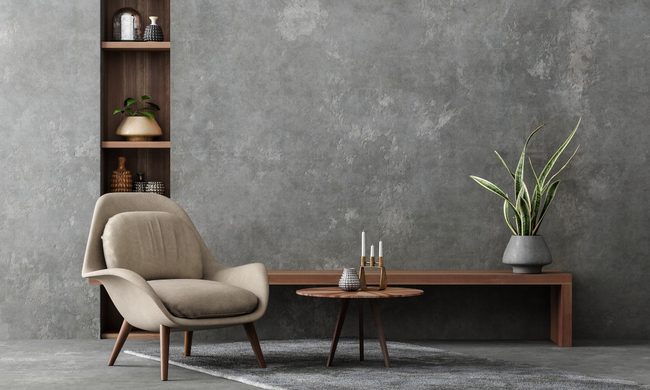Color drenching has swept through many contemporary designs in the past few years and has impacted maximalist spaces. Inspired by this bold and poignant interior aesthetic, designers and homeowners alike are investing in the newest trend: tile drenching.
If you want to hop on this trend and create a unique look for your bathroom or kitchen, then we have what you need to know to tile-drench the right way.
What is tile drenching?

Tile drenching is a lot like color drenching, from which this trend is inspired. Color drenching is all about covering a room from floor to ceiling in one color, often in a monochromatic palette. Tile drenching does something to a similar effect.
Tile drenching extends tiles across the floors, walls, and ceiling, covering the space in the material. The goal is to create a seamless flow throughout the room that immerses you in a unique experience.
For example, you can tile-drench a bathroom in a single type of tile in the color blue, covering the walls, ceiling, backsplash, and shower. Pair it with a plain white tile on the floor to help break up the space. Or, you might see tile drenching in the kitchen where the same texture or tone is used on the tile in the backsplash, floor, and counters.
One of the greatest strengths of tile drenching is the versatility and flexibility of this design aesthetic. You can tile-drench with a range of styles, shapes, textures, and colors, all of which create the same “drenched” look.
Ways to tile-drench your space

Thanks to the variety of tiles, tile drenching can be more experimental than color drenching. Here are a few ways you can tile-drench your space.
Cover the room in a single tile
The classic route for tile drenching is covering the room in a single tile. Consider ceramic blue tiles from the midcentury. You might cover your floor, walls, backsplash, and shower in this tile to color-drench the space. Or, in the modern era, you might choose a sleek stone tile to cover the walls, shower, and ceiling for a grounding effect.
Color-drench your tile-drench
If going all out with one type of tile sounds monotonous, you can add more visual intrigue to your tile drenching by investing in tiles of differing shapes and sizes. To keep the design cohesive, consider color drenching the tile.
For example, you might choose small green hexagon tiles on the floor in the bathroom. Pair that with vertical green subway tiles on the wall and shower for a unique tile and color-drenching effect.
Try various tile patterns
Alternatively, maximalist designers have begun tile drenching with various tile patterns. We’re seeing unique mosaic backsplashes paired with Moroccan shower tiles. Or, you might see patterned zellige tile backsplashes in the kitchen carried up the wall to fill the space while an alternative patterned tile is on the floor. Pattern clashing is also gaining attention as homeowners seek bold and expressive designs.
Use various tile shapes
When tile drenching, it’s a good idea to invest in various shapes. You might choose hexagon tiles for the floor and rectangle tiles for the wall and ceiling. This helps create more dimension and depth in your design, breaking up any monotony from the tile- or color-drenching aspects of this trend.
In the kitchen, you might see small mosaic-style tiles on the backsplash paired with large stone slab tile on countertops and the floor to play around with shape and form.
Blend different textures
Blending different textures can also help dress up a tile-drenched aesthetic. Use stone and ceramic tiles in the same room. Or, play around with manufactured tiles alongside handmade tiles. A stone tile in the shower feels rustic and biophilic, while a sophisticated subway tile adds a modern touch elsewhere in the room.
Play around with tile directions
Tile direction can also help enhance your design. If you’re tiling the ceiling, consider having the grout lines run perpendicular to the grout lines on the wall. In smaller spaces, have them run parallel for a lifting effect. When tiling the floor, consider turning rectangle wall tiles vertically to play around with vertical lines against a horizontal base.
Consider your grout
Grout can dramatically change the look of your space. For a bold look, consider going against the grain with a dark grout. Or, use dark grout against a darker tile for a moody aesthetic. White grout can enhance design lines and shapes, making them stand out. You can also play around with the grout width to enhance the various shapes and sizes in your designs.
Tile drenching is a gorgeous aesthetic that creates a bold and expressive look in your space. If you’re craving a fresh revamp in your bathroom or kitchen that creates an immersive and enveloping experience, consider tile drenching.




